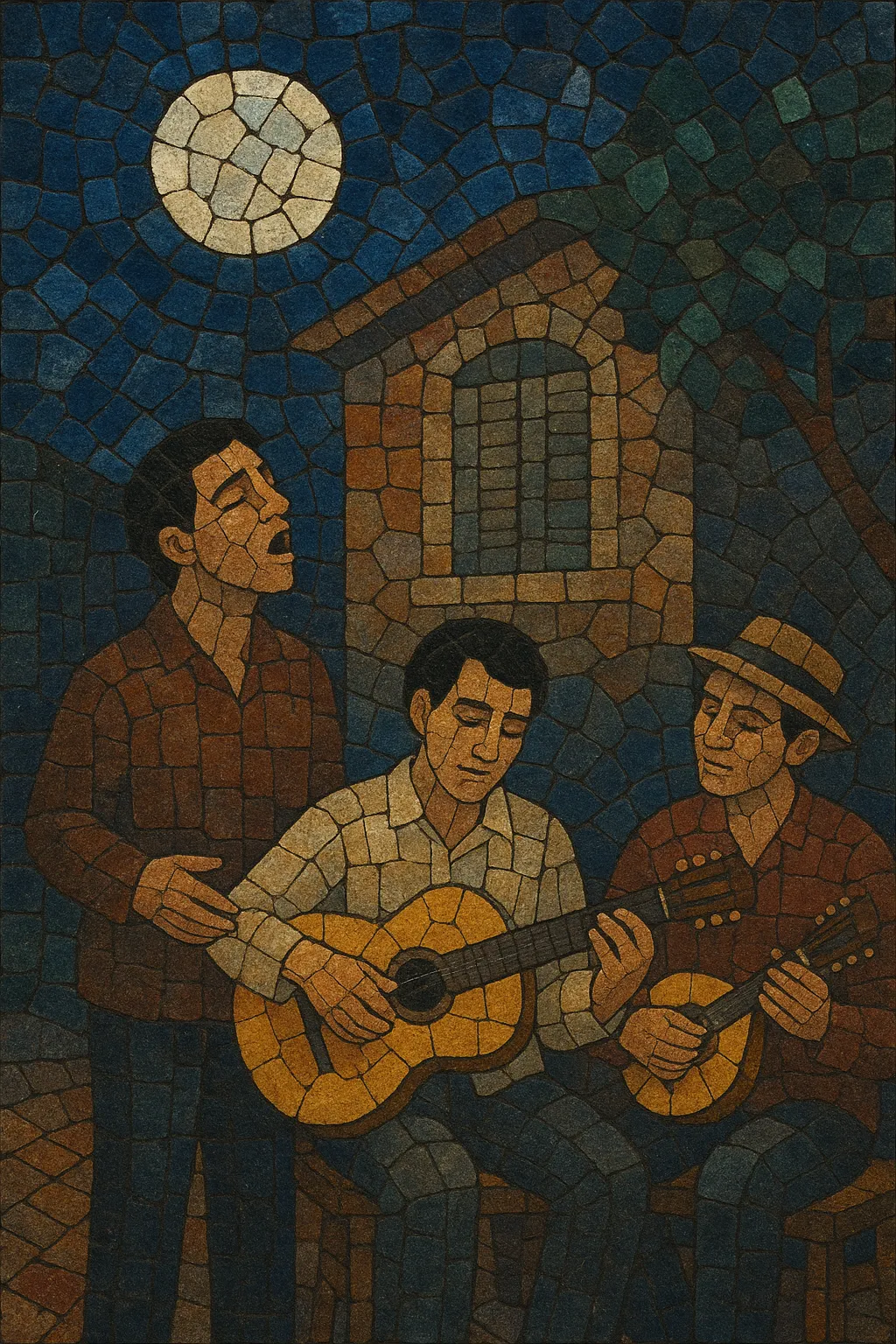Seresta is a Brazilian tradition of nocturnal, romantic serenade-songs, typically performed by small groups beneath windows, on quiet streets, or in backyard gatherings.
It blends the refined, sentimental poetics of the modinha with the lyrical sweep of waltzes and the instrumental lyricism of choro, favoring expressive vocals, rubato phrasing, and intimate acoustic accompaniment.
The repertoire is slow to medium in tempo, often in 3/4 or gentle 2/4, and centers on themes of love, longing, moonlit nights, and saudade. Hallmark instruments include the violão (acoustic guitar), bandolim (mandolin), cavaquinho, flute, and light percussion, supporting a crooning vocal style that predates and foreshadows later romantic currents in Brazilian popular music.
Seresta grew out of Brazil’s 19th-century serenading customs (serenatas) and the salon-song culture of the modinha, absorbing European waltz sensibilities and the instrumental eloquence of choro. In the early 1900s, as urban life expanded in cities like Rio de Janeiro and Minas Gerais, informal evening serenades coalesced into a recognizable style: tender, lyrical songs performed outdoors with small acoustic ensembles.
The genre flourished with the rise of radio and the star system. Seresteiros (serenade singers) became national figures, and composers and poets supplied a steady stream of sentimental songs. The sound emphasized expressive crooning, legato melodies, subtle rubato, and lush (yet tonal) harmonies. Public taste for romantic, nocturnal imagery made seresta a fixture of early Brazilian popular music alongside choro, sambas-canções, and valsas.
While the postwar years brought new styles (bolero, samba-canção’s expansion, and eventually bossa nova), seresta’s aesthetic—its intimacy, harmonic sweetness, and lyrical romanticism—remained influential. Many iconic singers carried seresta numbers in their repertoires, and the serenade ethos informed the intimate vocal delivery that would characterize later Brazilian song.
Although no longer the commercial mainstream, seresta persists as a living tradition. Cities such as Conservatória (RJ), known as the “Capital da Seresta,” host regular street serenades that keep the practice vibrant. Performers, guitarists, and community groups sustain the repertoire of classic serestas, and contemporary singers occasionally revisit the style, reaffirming its role as a cornerstone of Brazil’s romantic song heritage.
Aim for a gentle, intimate mood. Use slow to medium tempos, commonly in 3/4 (waltz) or a lilting 2/4. Allow for rubato in the vocal line—phrases can breathe and slightly float over the accompaniment.
Write in a tonal language with elegant, song-like melodies. Employ secondary dominants, borrowed chords, chromatic passing tones, and occasional modulations (often to relative or closely related keys) to heighten sentiment. Extended chords (6ths, 9ths) and expressive inner lines support the voice.
Use poetic, romantic texts anchored in nocturnal scenes—moonlight, quiet streets, windows, blossoms, and echoes of longing (saudade). Strophic or verse–refrain forms work well, with recurring hooks that carry the emotional theme.
Center the arrangement on voice and violão (acoustic guitar), with optional bandolim (mandolin), cavaquinho, and flute doubling or answering the melody. Keep percussion sparse (e.g., light pandeiro) to preserve intimacy. Guitar arpeggios and waltz-style accompaniment patterns are idiomatic.
Favor warm, legato crooning and nuanced dynamics. Place the vocal slightly ahead or behind the beat for expressivity. Interleave short instrumental interludes (bandolim or flute) between verses, mirroring the singer’s phrasing and ornamenting cadences.


